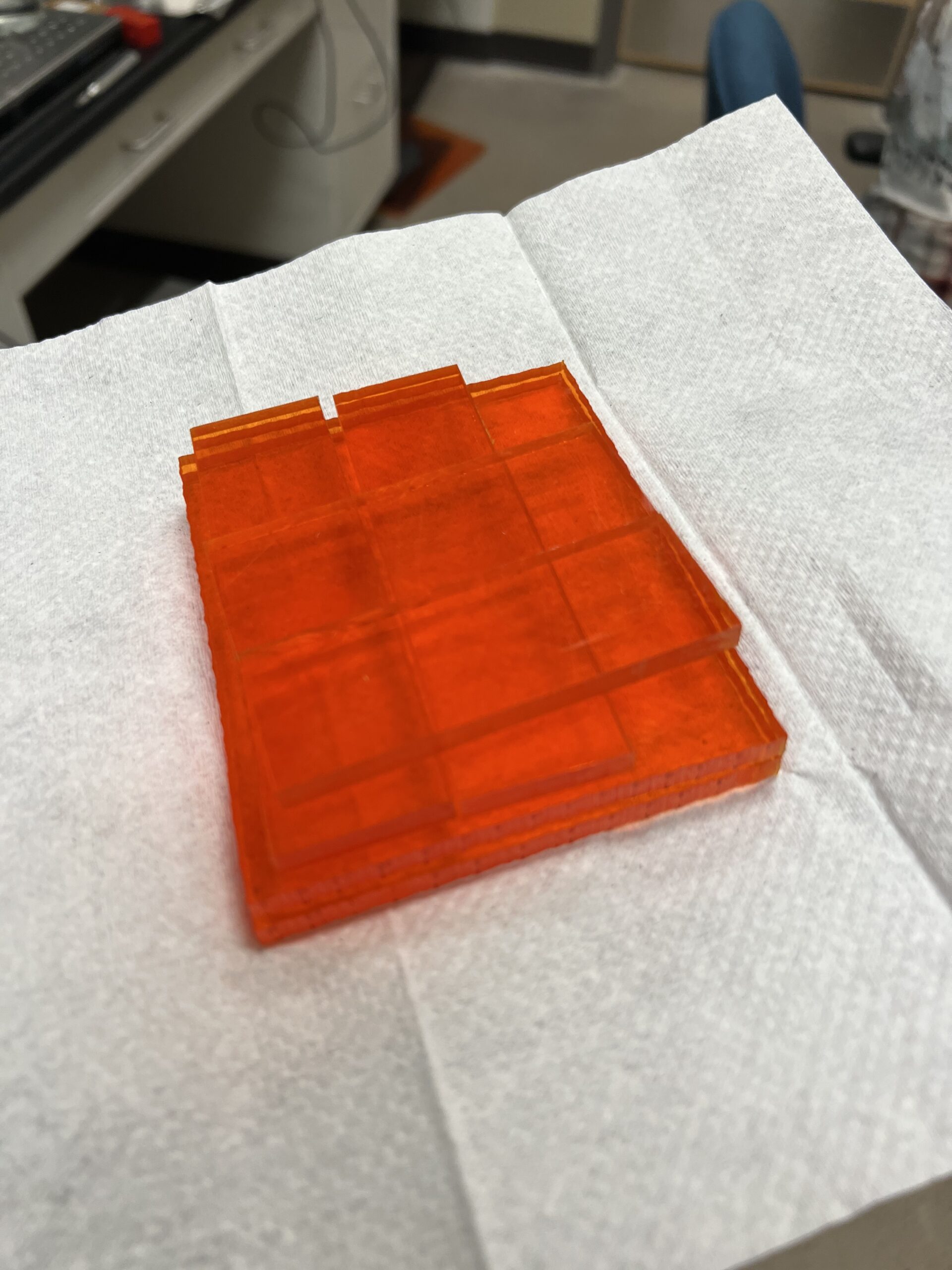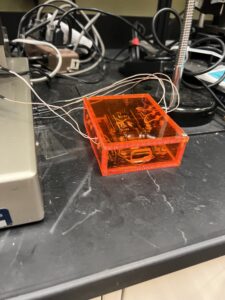I’m Tiffany Wu, and this is my sixth and final week at the University of Houston working in the Baldelli lab. It was an incredible experience getting to work on such an amazing research project, and it was a very bittersweet leave from the lab. This week, i finished the mechanism for the QW plate, constructed a box for my Arduino board and relay, and wrote a manual for my program so the lab can continue to use it for their future research.
My final week started off very easy; I spent the day writing my manual for how to use the ellipsometer and the programs I made to collect data for film analysis. Unfortunately, even on my final week, we still could not figure out the proper way to fit our data to the model graphs, but since they now have a way to collect the data with my program, Professor Baldelli can continue to experiment with the formulas and hopefully get the data to fit in the future. My manual needed to be very detailed on my exact process, so I executed a very simple data collection and added any small details I overlooked in my first draft.
On Tuesday, I went back to the quarter wave plate mechanism, and redesigned a completely different connection from the relay to the ellipsometer. Before, we attempted to solder the wires connected to the relay to the pins on the side of the ellipsometer, but it did not work. Professor Baldelli suspected that there was something in the inner wiring that must have gotten messed up since it was so old, so he suggested that I cut the wires that were directly connected to the QW plate and solder them directly to the relay wires. Thankfully, this worked, and I wrote a new code that turned the output from the Arduino on and off to allow the wave plate to warm up after being idle for so long.
My Wednesday morning consisted of monitoring the QW plate as the new code was running, to make sure that the delay we were using in between toggling was not allowing it to extend too far, where then it could not be pushed back in by the voltage output. After figuring out the ideal timing of the delays, I let the code run for 3-4 hours, so that the wave plate could be more smooth in its movement. In the afternoon, I collected my last batch of data for the summer using the silicon wafer we initially started out with. This time, I collected four sets of data, changing the position that the laser hit the sample for every new set. For each spot, I collected data both with and without the QW plate to compare the results. Then, I took all my data and imported it into SciDavis for graphing. I sent the final graphs to Professor Baldelli for more experimentation, and fixed a bit more of my manual.
On Thursday, I drew out a design for a box that I needed to house my Arduino and relay. After some careful calculations, I had the proper measurements and traced the sides onto a big piece of plexiglass for cutting. I cut out the pieces using an automatic saw, and with the help of Professor Baldelli, I smoothed out the sides of each piece using a milling machine. We had to ensure that each side was as smooth and flat as possible, so it could allow for the highest contact between each piece when gluing. Before I left for the day, I sent my manual to one of the graduate students, Elora, to work through with the ellipsometer and see if my steps could be followed and used properly.
Although it was my last day in the lab, Friday was my busiest one. In the morning, I drilled some holes onto the side pieces of my box so that the wires could all fit inside and be plugged into the pins of the Arduino board. With the help of Saida, we glued together the pieces of my box using some dichloromethane. What the chemical did was partially melt the plexiglass where it was placed, and joined each piece of plexiglass by melting it into one. After lunch, I spent a few hours shortening and soldering all of my wires with pins that could be plugged into each other. I tidied up my tangled mess of wires, and double checked that the relay could still work with my soldering. Professor Baldelli helped me drill the holes to attach my lid on the box, as well as the holes to secure my Arduino Board to the plexiglass bottom. After this, I put together all of my parts and wires into the box, and sealed my final creation, marking the end to my work in the lab. After saying my goodbyes to everyone who had helped me so much this summer, I made my final walk back to the dorms from the lab.
On Saturday, me and Saida packed our final things, and made our way to the airport to catch our flight back home. After two and a half hours in the air, we landed safely back in Montrose.
My time spent this summer in Houston will be unforgettable, and I have learned so much from my time there, both academically and personally. I have gotten a true taste of life on a college campus, and have become more independent as a result. I would like to give a big thank you to the Pinhead Institute and Sarah Holbrooke for placing me in Houston for this summer and giving me such a wonderful opportunity. I would also like to thank my mentor, Professor Baldelli for guiding me through my research, and teaching me so many things about chemistry and coding that I can apply in the future.



Tiffany, I am so happy to hear that your pinternship was an overwhelming success! It sounds like a life-changing experience all around!